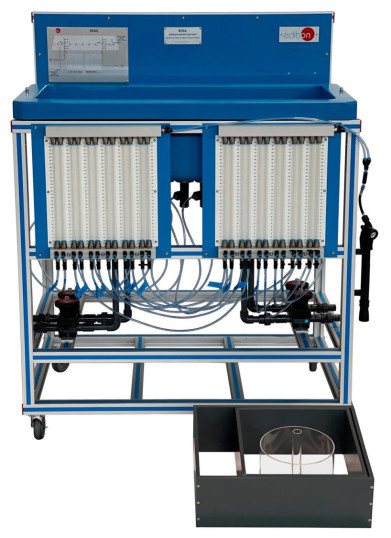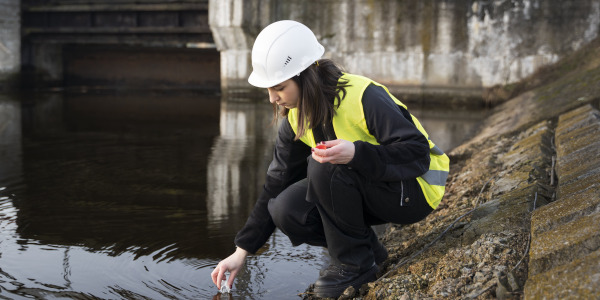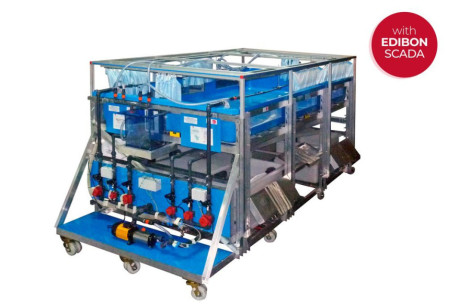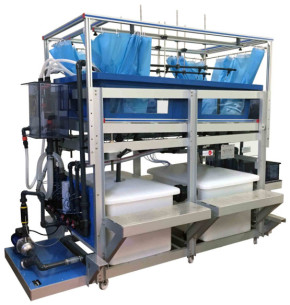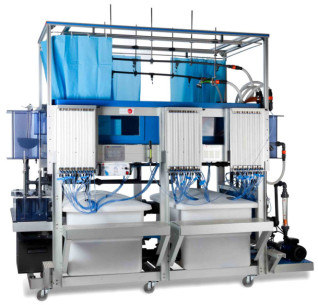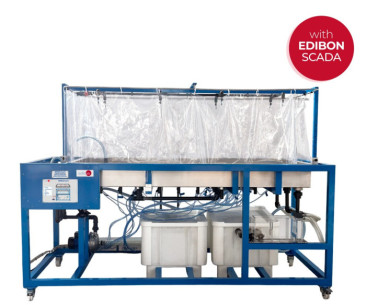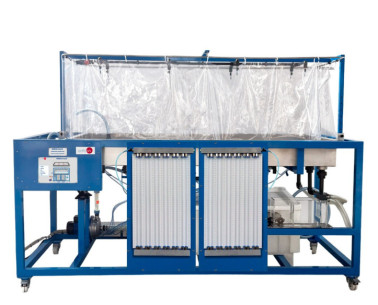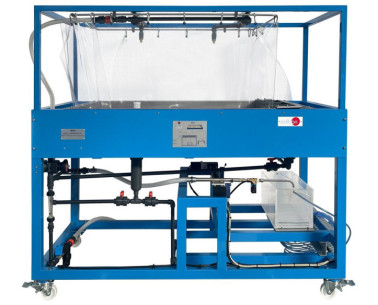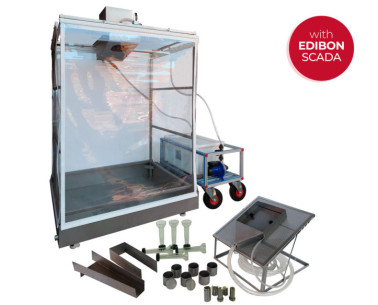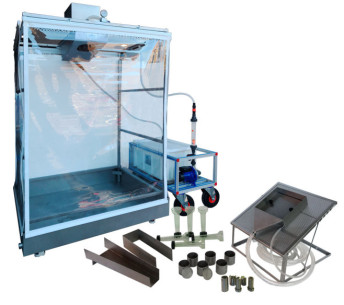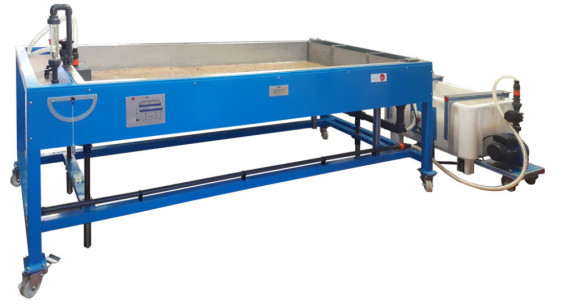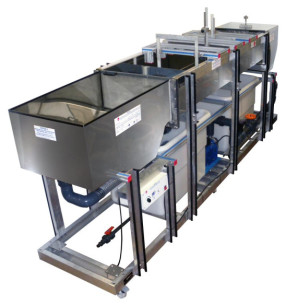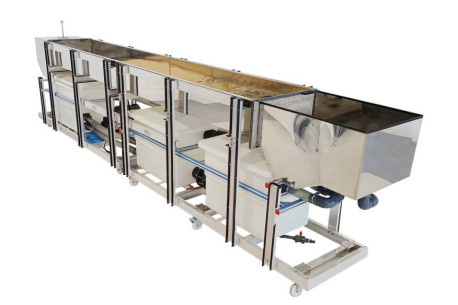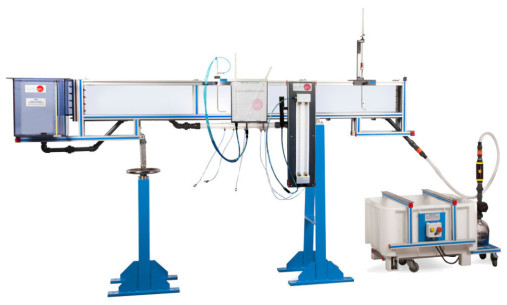EFAS 地下水流実験装置
革新的なシステム
The Ground Water Flow Unit, "EFAS", allows to demonstrate the hydrological principles of groundwater flow and the applications of these to different engineering constructions. It allows the investigation of ground water flows, the drainage processes and the effect of the permeability.
研究室
関連ニュース
概要
The Ground Water Flow Unit, "EFAS", is composed of a test tank that will be filled with fine grave or sand to construct to develop different models. The entry of water into the tank is done through two inlets, each of them located at each end. The flow of each water inlet is controlled by a membrane valve, which is easily accessible for the user. Inlets end inside the tank in a diffuser shape to affect the least possible the created model.
In the base of the test tank there are two wells simmetrically located. The wells outlets, located at the bottom part of the tank, have a membrane valve, that allows the regulation of the outletflows. Well have a spillway in their upper partto avoid floods.
The unit includes nineteen tappings in the base of the test tank, configured in cross shape . Pressure of the nineteen tappings can be seen in two manometers panels. The tappings have a sediments picking system to avoid them to reach the measuring elements. Under each tapping there is a plug which has to be removed regularly to extract the sand accumulated in it.
This unit is supplied with three accessories that make it easy the construction of the different models object of study:
- Model for a lake construction.
- Model for an excavation construction.
- Model for a confined aquifer construction.
In addition to the demonstrations and exercises proposed (see "Exercises and Practical Possibilities" section), instructors andstudents may contrutfurther model situations for study.
演習と指導の慣行
マニュアルに含まれるガイド付き実習
- Demonstration of hydraulic gradients in ground water flow, including the effect of permeability.
- Investigation of hydraulic gradients for different models built on the test tank.
- Determination of the ground water level between inlet and outlet.
- Demonstration of the Darcy’s Law.
- Study of the cone of depression for a well in a confined aquifer.
- Study of the cone of depression for a well in a free aquifer.
- Study of the cone of depression cone for two wells.
- Experiment to obtain hydraulic gradients for a model with two wells. Compare it with the result of only one well by the superposition method.
- Draining of or lake model.
- De-watering of an excavation model under freatic level.
- De-watering of an excavation model using two wells.
- Interaction of cones of depression by two adjoining wells.
- Draw-down curves for one well and two wells systems.
- Comparison of different profiles, combinations.
- How to fill the manometer tubes.
補完的な機器
コンピューター制御水循環システム・降雨シュミレーター・灌漑システム実験装置(2x1m)
水循環システム・降雨シミュレーター・灌漑システム実験装置(2x1m)
Computer Controlled Hydrologic Studies Unit
Hydrologic Studies Unit
Rainfall Hydrographs Unit
土壌浸食研究用降雨シミュレーター、コンピュータ制御(PC)
土壌浸食研究用降雨シミュレーター
河川流量シミュレーター
可動式ベッドおよびフロー可視化ユニット (作業セクション: 2000X610 mm)
可動式ベッドおよびフロー可視化ユニット (作業セクション: 4000X610 mm)
沈殿物輸送実演流路
品質

アフターサービス

 クッキーの設定
クッキーの設定

